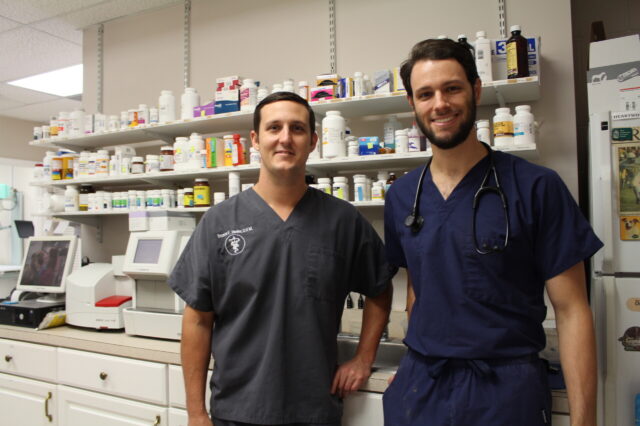Course aims to supplement veterinary students’ primary care experience

A new course at the University of Florida College of Veterinary Medicine aims to meet veterinary students’ longtime desire for more primary care experience by placing them in local pet clinics for an additional two weeks of clinical training.
“This course actually came about as a result of student demand,” said Wendy Mandese, D.V.M., a clinical assistant professor of primary care and coordinator of the new practice-based small animal clerkship, which started in August.
Until now, students have only had two required weeks of primary care rotations in the UF Small Animal Hospital, Mandese said. While they were able to sign up for an additional two weeks, students often had trouble finding the time due to the high level of interest and limited spots, Mandese said.
“This course is sort of the answer to that,” she said.
The course is modeled after the highly successful practice-based equine clerkship, led by Amanda House, D.V.M., a clinical associate professor of equine internal medicine at UF. That program started in 2011 as a means of ensuring that veterinary students receive consistent and well-rounded exposure to equine cases. When the equine clerkship began, 79 UF veterinary students had enrolled. By 2014, 109 students were participating and 53 equine practitioners were involved.
Thirty-two small-animal veterinarians from 17 practices in Alachua, Marion and Columbia counties are signed up for the new clerkship, which Mandese described as “practitioner-based, as opposed to practice-based.”
Each practitioner will have no more than one to two students a year, Mandese said, adding that this could change in time.
“We don't want the practitioners to be overwhelmed. This is a lot of responsibility, so we want to build the program gradually,” she said.
A practice might have four practitioners, but only one is responsible for the student, who will spend 80 percent of their time with that veterinarian.
“It's a lot more than shadowing,” she said. "Students will have specific learning outcomes they have to complete, and a checklist they have to follow before and after they are at the practice."
Mandese said it's important for students to understand that the practical needs and financial limitations of clients seen at a state-of-the-art, full-service veterinary academic hospital generally do not mirror those of the average pet owner, just as an academic hospital facility does not mirror the average veterinary clinic.
“Not everyone has CT or MRI,” Mandese said. “Many students get into general practice and realize it's not anything like what's at the university.”
Having worked at a general veterinary practice with new graduates, Mandese said she believes it's crucial that students experience the difference in pace and potential financial limitations of owners.
“If my students come up with a treatment plan for an animal that costs $100, I try to say to them, ‘OK, that is a good plan, but what would you do if the owner says they don’t have that much money?’” Mandese said. “You always need to have a Plan B ready.”
Understanding pet owners’ financial limitations forces students to think about the cost of the options they are offering, Mandese said.
“Will it be blood work or X-rays if a client can’t afford both? An animal needs ultrasound, but the client can’t afford it. What am I going to do? You have to puzzle it out in your head,” Mandese said. “Our students need to be able to do this.”
One area practitioner who signed up to participate in the new clerkship, Clint Greene, D.V.M., said it would be rewarding to work with students in a mentored and supportive way, helping them experience a facet of practice that they might not otherwise see during their formal university training.
“The students will gain some insight into career opportunities and a better understanding of what a healthy veterinarian-to-veterinarian relationship looks like,” Greene said. “In return, I am energized by the enthusiasm, excitement and cutting-edge knowledge they’ll bring to the practice.”
The University of Florida College of Veterinary Medicine is supported through funding from UF Health and the UF Institute of Food and Agricultural Sciences.
About the author
